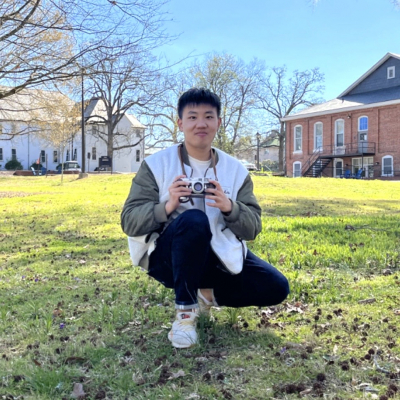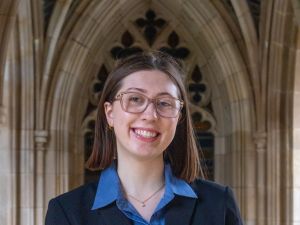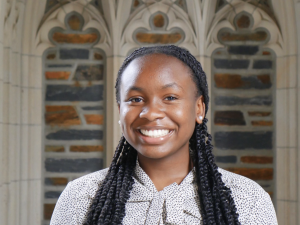Student Spotlight: Richard Gao

This week's student spotlight features Richard Gao, an international student from Huaibei, Anhui, China. Richard is a graduating senior with a major in Neuroscience and a minor in Art History, on track to Graduate with Distinction. Arriving in the US, amidst a global pandemic, Richard found navigating the complex cultural landscape between China and the US surreal. However, studying performance artists like Mike Parr, Marina Abramovic, and Zhang Huan in his Art History research, who use pain and vulnerability as a universal language, has allowed Richard to see the potential for empathy and connection through physical and emotional traumas. Studying pain has been both an intellectually fulfilling and spiritually empowering journey for him.
Richard's passion for Neuroscience, was inspired by clinical exposure and artistic introspection. He gains a deeper understanding of the neurological and psychosocial mechanisms of pain initiation and maintenance through courses like Neuroendocrinology, with Jenna McHenry, assistant professor of psychology and neuroscience and Functional Neuroanatomy with Leonard White, associate professor in neurology, each tackling the understanding of pain from a different level. Richard is currently working on his senior thesis at the Translational Pain Research Laboratory, where he explores recent research proposing that pain is situated within a complex framework of communication or interaction between peripheral and central nervous systems. His senior thesis focuses on the effects of adipocyte microRNA-133a downregulation on the expression of its target mRNA in the spinal cord, which are important mediators of pain signaling and central sensitization. In layman's terms, he studies Chronic Primary Pain Conditions (CPPCs), designating pain symptoms without a clear etiology, such as tissue damage or another disease condition. Migraine is an example of a CPPC.
Nackley’s lab is the first to discover that CPPCs originate from fat tissues known as “adipose tissues”. Besides laboratory benchwork, Richard continues his project on pain and performance with Professor Carlos Rojas for his Art History Minor. Richard analyzes works of late 20th-century Chinese performance artists through queer and affect theory. Here, queer theory serves as a tool to deconstruct and critique the dominant social norms and expectations surrounding sexuality and gender, aiming to validate the rich tapestry of human experiences beyond a heteronormative framework, whereas affect theory sheds light on how emotions and non-conscious responses—collectively known as “affect”—are deeply intertwined with the creation of personal meaning and the emergence of social phenomena. Richard wishes to argue for the utopian potential of pain and failure that this body of works tackles. His parallel inquiry into pain makes him aware of the intricacy of the pain phenomenon that no single discipline could fully encompass.
In addition to his academic work, Richard is proud to lead the Duke CommuniTEA, a tea club where members can gather, drink tea, connect to the present, and have a conversation. The tea club's mission is to imagine an alternative way of making connections at Duke. For many members, the tea club is a welcoming space where they can shed the pressure and expectations that often come with university life. Richard feels privileged of to be able to facilitate this tea community at Duke. He also teaches a house course on tea culture, Chinese Tea Culture and History.
After graduating from Duke, Richard plans to take a few gap years to explore the possibility of bridging his artistic and scientific inquiry of pain. He hopes to continue working in a pain research lab while connecting more with the performance artist community.




